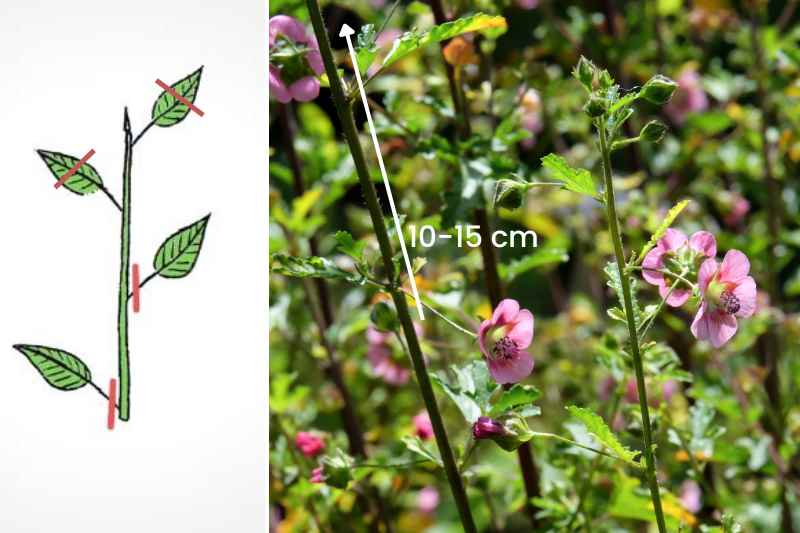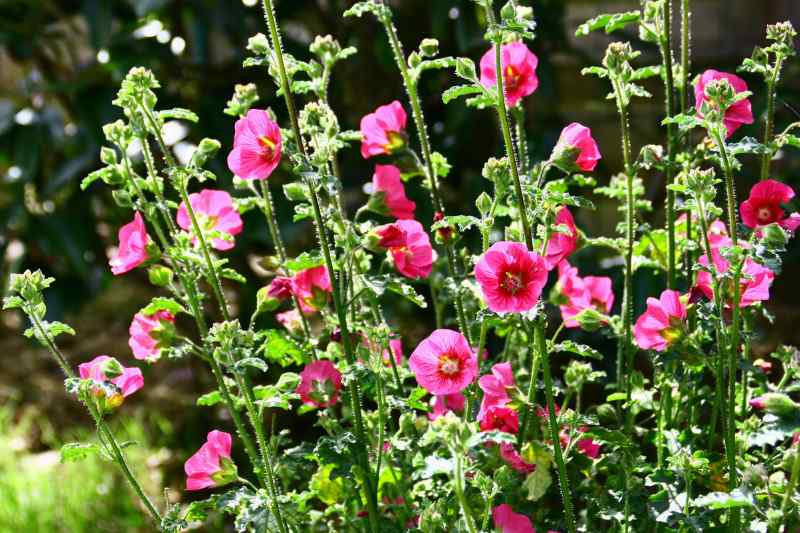Anisodontea capensis and Anisodontea scabrosa, also called Cape mallow, are ornamental bushes prized for their delicate flowers, often pink, which bring a touch of softness to the garden. To propagate this plant by cuttings is an excellent way to multiply it easily while saving money. Follow this simple guide to succeed with anisodontea cuttings.
Cape mallow in brief
Cape mallow, or anisodontea, is an ornamental bush native to South Africa, valued for generous, long-lasting flowering, usually pink or mauve, reminiscent of hibiscus. Fast-growing, this semi-evergreen plant reaches about 1 to 2 metres in height and thrives in mild climates. It prefers sunny or lightly shaded exposure and well-drained soil. Its hardiness is moderate (down to -6°C), making it ideal for Mediterranean gardens or for growing in a pot in colder regions.
To learn more about Cape mallow, read the sheet Anisodontea: planting, care, pruning.

Necessary equipment
- Pruning shear or garden scissors well sharpened and disinfected
- Rooting activator (facultative, but encourages rooting)
- Small pots or trays with good drainage
- Light potting mix: mix of compost and sand (or perlite) or special compost for propagation by cuttings
- Transparent plastic bag or mini greenhouse to maintain humidity
- Watering can with fine rose to moist the mix
When to propagate your anisodontea?
The best time to propagate anisodontea is from June to September, during active growth. Cuttings then have greater chance to develop roots quickly.
How to propagate anisodontea?
Prepare plant
Choose a young, semi-ripe stem (neither too soft nor too woody). It should measure between 10 and 15 cm.
Cut the cutting
- Cut stem just below a node (area where leaves develop).
- Remove lower leaves, leaving only 2 or 3 leaves at top. This will limit water loss through evapotranspiration.

Plant the cutting
- Fill a pot with compost-sand mix.
- Insert cutting 2-3 cm deep.
- Firm lightly around to hold cutting in place.
Create humid environment
- Cover pot with transparent plastic bag (without touching leaves) or place in mini greenhouse. This is called an enclosed cutting.
- Place in bright spot, but avoid direct sun.
Watering and care
- Keep mix regularly moist (never waterlogged!).
- Ventilate plastic bag daily to avoid mould.
Observe rooting
Roots usually appear after 4 to 6 weeks. Once cutting is well rooted, pot up into a larger pot or plant directly in garden.
Care after establishment
Once roots developed, pot up your anisodontea into a larger pot or plant in the garden in a sunny or semi-shaded spot, avoiding scorching sun for young plants and protecting them from cold winds.
Water moderately, only when surface of mix dries. During growth, add liquid fertiliser for flowering plants every 2-3 weeks.
Pinch tips after potting on then prune lightly after flowering to encourage compact habit.

Mistakes to avoid
Overwatering or poorly drained soil can cause root rot, visible as yellowing or drooping leaves. Prefer a light, well-drained mix by blending compost with sand or perlite.
Young plants, sensitive to sun scorch, should be gradually acclimatised to full sun after few days in semi-shade.
































Comments